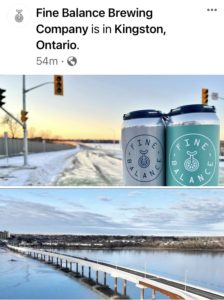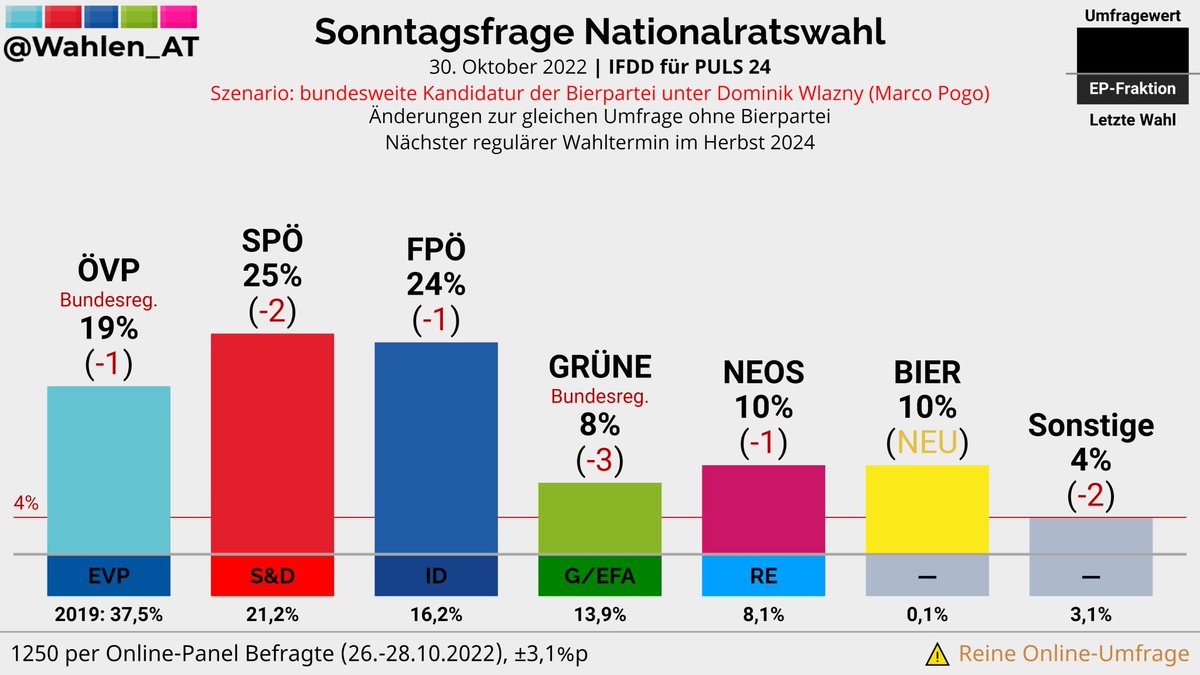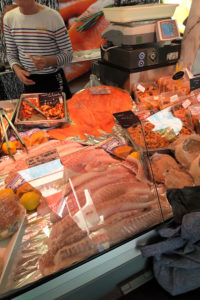 So much happening out there. Except maybe in the beer world. All a bit dull this week. Yet, it is spring. And the plants are on the move. I have to dig up me parsnips as soon as I can. You never know if you are going to pull up something the size of a pencil or a baseball bat – but by leaving them in the soil all winter, their starches convert to sugars and the make a fine ginger orange soup. And wouldja look at that there? Growing right now in a corner of the basement in part of my seed starting set up. A zucchini. A tiny wee zucchini. It’s spring for sure now.
So much happening out there. Except maybe in the beer world. All a bit dull this week. Yet, it is spring. And the plants are on the move. I have to dig up me parsnips as soon as I can. You never know if you are going to pull up something the size of a pencil or a baseball bat – but by leaving them in the soil all winter, their starches convert to sugars and the make a fine ginger orange soup. And wouldja look at that there? Growing right now in a corner of the basement in part of my seed starting set up. A zucchini. A tiny wee zucchini. It’s spring for sure now.
 Speaking of farming, Stan is slacking off in New Zealand but took time to post a lovely image from the hop harvest:
Speaking of farming, Stan is slacking off in New Zealand but took time to post a lovely image from the hop harvest:
“These are my moisture meter,” said Brent McGlashen, a fifth generation hop grower, well into a day last week punctuated with frequent grabbing, breaking and smelling of freshly picked hops being kilned on one of the Mac Hops farms.
There. I pretty much just poached his whole post. But there are other posts. Go see.
Picking up on the weak signals from beer culture idea, the monthly B+B email newsletter for March had this idea:
Futures thinking is a way of reflecting on what might or could happen. It’s not about trying to predict the future but, rather, accepting uncertainty and considering multiple possible outcomes… What’s the equivalent today? There are certainly breweries doing things that make most of us think, “Interesting, but it’ll never catch on.” For example, there’s been a slow but steady trickle of beers using waste products, such as Toast Ale, made with surplus bread, and Singapore’s NewBrew which is made with recycled sewer water.
Great. Sewer juice. That sorta puts the “dis” in dystopian, no? What next – powdered beer? Hmm. You know, I really do like how the focus is on coping with the range of futures rather than the prognosticating expert Dr. Tomorrow claptrap. It’s like the risk matrix sort of thinking I’ve participated in big project planning. Craft beer might have avoided a whack of issues if it has tried a bit of futures thinking… but… well, it’s craft, right?
 No, let’s stay with reality based reality. Facts. Like this. In a bit of a post-St.Patrick’s Day round up, I found this to the right very interesting from KHM: “My mate Alan (of chip review fame) on the folk music cardio workout.” Seems a pal of a pal wore a FitBit while playing a gig on the big day and learned a lesson. I do recall fitting into my 32 waist jeans back in my slam dancing days so it’s a likely tale of health and publife aligning neatly. Can’t say the same about this item on alcohol and heart health that I came across, a medical study published just a year ago that, again, confirms that the J-Curve is a fantasy, given not only the now well established understanding that it’s not that non-drinkers get sick but, once sick, the ill just don’t drink as much. It now turns out the light drinkers are also otherwise healthier, too:
No, let’s stay with reality based reality. Facts. Like this. In a bit of a post-St.Patrick’s Day round up, I found this to the right very interesting from KHM: “My mate Alan (of chip review fame) on the folk music cardio workout.” Seems a pal of a pal wore a FitBit while playing a gig on the big day and learned a lesson. I do recall fitting into my 32 waist jeans back in my slam dancing days so it’s a likely tale of health and publife aligning neatly. Can’t say the same about this item on alcohol and heart health that I came across, a medical study published just a year ago that, again, confirms that the J-Curve is a fantasy, given not only the now well established understanding that it’s not that non-drinkers get sick but, once sick, the ill just don’t drink as much. It now turns out the light drinkers are also otherwise healthier, too:
…individuals in the light and moderate consumption group had healthier lifestyle behaviors than abstainers, self-reporting better overall health and exhibiting lower rates of smoking, lower BMI, higher physical activity, and higher vegetable intake (eFigure 3 in the Supplement). Adjustment for the aforementioned lifestyle factors attenuated the cardioprotective associations with modest alcohol intake...
Veg intake. That’s what did Lemmy in. Low veg intake. I’m reading his biography right now, by the way. Quite the lad. The good news from the cancer study by the way is that the two drink a day thing makes a lot of sense. We are built to take a certain amount of the alcky. Bevvying below that is really low risk but, be clear, heading northward causes a rapid increase in complications. Not funny.
But you know what is funny? People debating if Jeff is or is not a “beer bro“! WTF? I haven’t a clue what they even meant by it. I assume either it’s being too Alström circa 2008… or not Alström enough! But he was slagged just because he triggered a discussion on whether it is actually important to have full measures of beer served. Of course it is, well all know that – and everyone else is wrong but… the point is this: who gives a flying fuck about beer enough to call someone else a “beer bro” like is signifies anything other than the speaker is a utter moron? Hil. Aires. Lou. Zars.
 I like this image. A useful reminder that early US microbreweries were not about the dissassembling big macro but to leverage the interest in imports. That’s one of the “20% in 2020 era” revisionist myths that bulk craft created.
I like this image. A useful reminder that early US microbreweries were not about the dissassembling big macro but to leverage the interest in imports. That’s one of the “20% in 2020 era” revisionist myths that bulk craft created.
Hmm. I am of slightly two minds about this story in the BBC where a 41 year old warrant was enforced related to a bar room fight even if I lean heavily to the result:
The story began in March 1980 when McGrath, an Irish-British national born in Leeds, was out drinking with friends. The 21-year-old, by his own admission, became involved in a drunken fight between two groups of young men. In his telling, he fled to a nearby pub when police arrived. “I’m not getting involved with the police,” he remembers thinking. But British prosecutors alleged he was part of a group that assaulted an officer, who suffered a broken nose, cuts and bruising while attempting to restrain a suspect. Five men were charged, including McGrath. Instead of facing justice, he fled to Ireland. He says he absconded because he believed he was being “set up”.
Note: After the jury met, he “was acquitted, the judge told jurors that he did not know why the case had been brought after so many years.” Still… brawling and absconding are crimes. I’ve been defence on historic claims, though none so minor.
Martyn was on the Beer Ladies Podcast, well worth a listen.
Matthew wrote a good piece on Guinness in the Pellicle,* especially around the idea that there is Guinness guilt. I suffer from no such thing. I have always thought that a good mass produced beer is a very fine thing. Guinness is up there with Miller High Life and Utica Club and… well, there must be a few others. It can be lovely:
In some places, though, to me it just seems to taste spectacular: The Thomas Connoly in Sligo, Lucky Joe’s Saloon in Fort Collins, Stoke Newington’s Auld Shillelagh, and, my favourite spot for a G, The Fidds’ in Levenshulme, South Manchester. When I am in such a place, I wouldn’t want to drink anything else. It’s not just about the beer, it’s about achieving a certain, blissful state of mind. I don’t want to think, I just want some pints.
Why does Guinness make memories?My uncle told the story of following Scotland’s rugby team as a travelling fan and, back in the day in Dublin, having gravity poured Guinness from barrels under the bar… which meant the person pouring had to lay on their side. I myself had 14 pints one night for free in a pub in Hampstead Heath, London near our hostel back around 1986. I’ve told you this one before, haven’t I? One of the loveliest humans I ever saw walked in that pub early that evening. She just stood there, dressed in a little black dress, big waves of blond hair up top, wearing just that one broach a golden a harp. She stood there looking at us, us looking at her. Until the place quietened. Everyone just staring at her. At which time she proclaimed “BOYS, I’M THE GUINNESS REP AND IT’S FREE TONIGHT!!!” Suddenly, we were in a scene from a movie. We’d won the lotto! Cheers filled the place, kegs were carried in on the shoulders of beefy gents in branded garb, everyone loved everyone else and we drank and drank and drank. I can die happy having lived there that evening.**
Jamie Goode wrote in Wine Anorak about the pending crisis of worthless drinks writing now being done by computer rather than by ill served disrespected humans. But wasn’t this the promise of the computer age? Didn’t Dr Tomorrow himself promise us all in around 1974 that they’d take the tat work off the humans? The picture they paint of the life of a bulk writer isn’t that compelling:
…for a long time many ‘journalists’ have been employed creating copy with the sole motivation of search engine optimization (SEO). Reading articles that have been written with SEO in mind is tiresome. I don’t do it: I want my writing to be me, writing in my voice, in my style, as well as I can do it. I’m lucky that I can afford this luxury, and I’m hoping for my readers that they appreciate the integrity of this approach. Many modern journalists might be employed by a newspaper of repute, but they don’t get their bylines in the paper. Their job is to show up for a shift and get paid perhaps £130 to write an article an hour for 8 hours. The subjects are determined by keywords trending on google….
Yikes. Bring on the server farms, I say! Now finally… witness an honest brewery. And not about what is in the beer or how much they sold you but… but breweries being honest about taxes:
Ram McAllister, owner and head brewer at Fairweather Brewing, said the proposed tax hike will hit the small brewer with an additional 20.8 cents to 41.8 cents per 100 hectolitres produced or 0.21 cents to 0.42 cents per litre. “We don’t welcome any tax increase,” said McAllister. “(But) this one has been misrepresented or misunderstood as the equivalent of a six per cent increase in the price of beer.”
Thank you. There. Done. Enough. Finis. Consider Mastodon. Here’s your newbie cheat sheet:
Stan Hieronymus | The Man!
Boak & Bailey | The B² experience
Katie Mather | Shiny Biscuit and Corto
David Jesudason | “Desi Pubs” (2023) author
Ron Pattinson | The RonAlongAThon Himself
Al Reece AKA Velky Al | Fuggled
Jennifer Jordan | US hops historian
Alan McLeod | A Good Beer Blog (… me…)
Andreas Krennmair | Vienna beer and lager historian
Beer Ladies Podcast | Lisa Grimm and colleagues
Jay Brooks | Brookston Beer Bulletin
Joe Stange | Belgian beer expert, beer magazine editor
Cider Bar | Barry makes Kertelreiter cider
Laura Hadland | CAMRA historian and beer writer
Brian Alberts | US beer historian
Jon Abernathy | The Beer Site
Maureen Ogle | US Beer Historian
Lars Garshol | Norwegian Beer Historian and Kveik Hunter
James Beeson | Beeson on Beer
Carla Jean | MAINER!!!
Thandi Guilherme | Beer Ladies Podcast Co-host
Lisa Grimm | Beer Ladies Podcast Co-host
Rob Talksbeer | Podcaster and Youtuber
Anthony Gladman | UK Drinks Writer
Jeff Alworth | Manna Of Beervana
Northwest Beer Guide | Fairly self explanatory… but not NW Latvia…
Evan Rail | Prague based GBH editor, freelance writer, NYT etc.
Todd Alström | 50% of the Alströms
Jacob Berg | Beer talking librarian
Anyone else? And check the blogs, podcasts and newsletters including more weekly recommendations from Boak and Bailey every Saturday and maybe from Stan at his spot on those Mondays but, you know, he writes bits and bobs when he can… like this! Get your emailed issue of Episodes of my Pub Life by David Jesudason every Friday. Once a month, WIll Hawkes issues his London Beer City newsletter and do sign up for Katie’s wonderful newsletter, The Gulp, too. Ben’s Beer and Badword is back! And check out the Atlantic Canada Beer Blog‘s weekly roundup. There is new reading at The Glass. Any more? Yes! Check to see the highly recommended Beer Ladies Podcast. And the long standing Beervana podcast . There is the Boys Are From Märzen podcast too and check out the travel vids at Ontario’s own A Quick Beer. There is more from DaftAboutCraft‘s podcast, too. Still gearing up, the recently revived All About Beer has introduced a podcast, too even if it’s a bit trade. There’s also The Perfect Pour. Plus follow the venerable Full Pint podcast. And the Craft Beer Channel this week on Youtube. And remember BeerEdge, too, and The Moon Under Water… if you have $10 a month for this sort of thing… I don’t. Pete Brown’s costs a fifth of that. There was also the Beer O’clock Show but that was gone after a ten year run but returned renewed and here is the link!***
*I’m calling it “the Pellicle” now. Not “The Pellicle” because that is not the name. Like “the rugby” which I say to my kid who plays. As in: “Good day at the rugby, kiddo? Good, now you know what I read in the Pellicle?” That sort of thing.
**And we didn’t even imagine doing something like this…
***And finally the list of the departed newsletters and podcasts or those in purgatory. Looks like both Brewsround and Cabin Fever died in 2020, . We appreciate that the OCBG Podcast is on a very quiet schedule these days – but it’s been there now and again. The Fizz died in 2019. Ben has had his own podcast, Beer and Badword (Ed.: …notice of revival of which has been given… still not on the radio dial…) Plus Fermentation Radio with Emma Inch seems done and the AfroBeerChick podcast is gone as well! The Fingers Podcast packed it in citing, umm, lack of success… as might have been anticipated, honestly. Did they suffer a common fate? Who knows?










 Long time pal of this here blog and fellow Scot abroad Alistair Reese of
Long time pal of this here blog and fellow Scot abroad Alistair Reese of 









